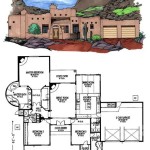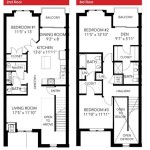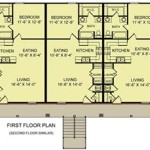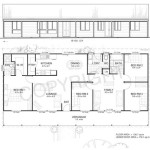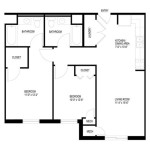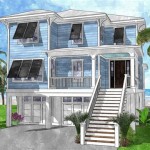Free Standing 2 Car Garage Plans: A Comprehensive Guide
The demand for detached two-car garages is consistently high among homeowners seeking additional storage, workspace, or vehicle protection. A free-standing two-car garage offers flexibility in placement on a property and is often more cost-effective than adding an attached garage to an existing house. This article provides a comprehensive guide to understanding free-standing two-car garage plans, covering essential considerations, common features, foundational requirements, framing techniques, roofing options, and critical factors to consider before commencing construction.
Understanding the Essential Considerations Before Selecting a Plan
Prior to even browsing garage plans, several critical factors must be addressed to ensure the final structure meets the owner's needs and complies with local regulations. Ignoring these preliminary considerations can lead to costly modifications and delays during the construction process.
Local Zoning Regulations and Building Codes: This is the most crucial aspect to investigate. Zoning ordinances dictate the allowable placement of structures on a property, including setbacks from property lines, maximum height restrictions, and any specific architectural requirements intended to maintain neighborhood aesthetics. Building codes, on the other hand, establish minimum safety standards for construction, covering aspects such as structural integrity, fire resistance, and accessibility. Contacting the local planning and building department is essential to obtain accurate information about these regulations. In some areas, homeowners associations (HOAs) may also impose additional restrictions on garage designs and placements.
Property Size and Topography: The size of the property dictates the maximum allowable footprint of the garage. Additionally, the topography of the land plays a significant role in determining the feasibility and cost of construction. Sloping land may require extensive excavation and retaining walls, adding significantly to the overall project expenses. Soil conditions also need to be assessed to determine the appropriate foundation design. A geotechnical survey, conducted by a qualified engineer, can provide valuable insights into soil stability and load-bearing capacity.
Intended Use of the Garage: While the primary function of a two-car garage is typically vehicle storage, many homeowners utilize the space for additional purposes, such as a workshop, storage for tools and equipment, or even a recreational area. The intended use will influence the required dimensions of the garage, the need for electrical outlets and lighting, and the type of flooring to be installed. For example, a workshop will require ample lighting, sufficient electrical power for tools, and a durable, easy-to-clean flooring surface. Storage for oversized items might necessitate higher ceilings or larger door openings.
Budget and Material Selection: Establishing a realistic budget is paramount. The cost of a free-standing two-car garage can vary considerably depending on the size, materials used, and the complexity of the design. Obtaining multiple quotes from contractors and suppliers is recommended to compare prices and ensure that the project remains within budget. Material selection also impacts the overall cost. Wood framing is generally more affordable than steel framing, but steel offers increased durability and resistance to fire and pests. The choice of siding, roofing, and garage doors will also significantly affect the final cost.
Placement and Accessibility: The location of the garage on the property impacts its accessibility and the ease of maneuvering vehicles in and out. Consider the proximity to the house, the existing driveway configuration, and the potential for adding a separate driveway or widening the existing one. Ensure that there is sufficient space for vehicles to turn around and park without obstructing the street or neighboring properties. The location should also take into account drainage patterns to prevent water from accumulating around the foundation.
Common Features and Variations in Two-Car Garage Plans
Two-car garage plans are available in a wide range of styles and configurations to accommodate diverse needs and preferences. Understanding the common features and variations will help homeowners select the plan that best suits their specific requirements.
Standard Dimensions: A typical two-car garage measures approximately 20 feet wide by 20 feet deep, providing sufficient space to park two standard-sized vehicles. However, these dimensions can be adjusted to accommodate larger vehicles or to provide additional storage space. For example, a 24-foot by 24-foot garage offers more room for maneuvering vehicles and storing tools or equipment. Some plans also incorporate a small workshop area or a storage loft above the parking area.
Roof Styles: The roof style significantly impacts the overall appearance of the garage. Common roof styles include gable roofs, hip roofs, and shed roofs. Gable roofs are characterized by their triangular shape and are relatively simple and cost-effective to construct. Hip roofs feature sloping sides and ends, providing greater stability and resistance to wind. Shed roofs have a single sloping surface and are often used for modern or minimalist designs. The choice of roofing material also influences the appearance and durability of the roof. Asphalt shingles are the most common and affordable option, but other materials, such as metal, tile, or wood shakes, offer superior aesthetics and longevity.
Door Options: The type and size of the garage doors affect both the functionality and the appearance of the garage. Common door options include sectional doors, which roll up in sections, and swing-out doors, which open outwards. Sectional doors are space-saving and can be easily automated with an electric opener. Swing-out doors offer a classic look but require more clearance in front of the garage. The width of the door opening should be sufficient to accommodate the vehicles that will be parked in the garage. A standard two-car garage typically has one large door, a double door, or two single doors.
Window Placement and Style: Windows provide natural light and ventilation, enhancing the usability of the garage. Window placement should be carefully considered to maximize natural light and minimize glare. Common window styles include double-hung windows, casement windows, and sliding windows. The size and number of windows will depend on the desired level of natural light and the overall aesthetic of the garage. Windows can also be strategically placed to provide views of the surrounding landscape.
Siding Materials: The siding material affects the durability, maintenance requirements, and appearance of the garage. Common siding materials include wood siding, vinyl siding, metal siding, and brick veneer. Wood siding offers a natural look but requires regular painting or staining to protect it from the elements. Vinyl siding is a low-maintenance option that is available in a variety of colors and styles. Metal siding is durable and fire-resistant, but it can be more expensive than other options. Brick veneer provides a traditional and elegant look but requires a solid foundation to support its weight.
Key Structural and Construction Considerations for Detached Garages
The structural integrity of a free-standing two-car garage is paramount for ensuring its safety and longevity. Careful attention to foundational requirements, framing techniques, and roofing details is essential for a successful construction project.
Foundation Types: The foundation is the most critical element of any structure, providing a stable base and transferring the weight of the building to the ground. Common foundation types for detached garages include concrete slabs, pier and beam foundations, and full basements. Concrete slabs are the most common and affordable option, providing a level surface for the garage floor. Pier and beam foundations are suitable for sloping sites, allowing the garage to be elevated above the ground. Full basements provide additional storage space and can be used as a workshop or living area. The choice of foundation type will depend on the soil conditions, the topography of the site, and the intended use of the garage.
Framing Techniques: The framing provides the structural support for the garage walls and roof. Common framing techniques include stick framing and prefabricated trusses. Stick framing involves constructing the walls and roof on-site using individual lumber pieces. Prefabricated trusses are manufactured off-site and delivered to the job site for quick and easy installation. Stick framing offers more flexibility in design, while prefabricated trusses are more efficient and cost-effective. The framing should be designed to meet local building codes and to withstand wind and snow loads.
Roofing Installation: Proper roofing installation is crucial for protecting the garage from the elements. The roofing material should be installed according to the manufacturer's instructions to ensure its watertightness and durability. Flashing should be installed around chimneys, vents, and other roof penetrations to prevent water from leaking into the garage. The roof should also be properly ventilated to prevent moisture buildup and to extend the lifespan of the roofing materials. Regular maintenance, such as cleaning gutters and removing debris, is essential for maintaining the integrity of the roof.
Electrical and Plumbing Considerations: If the garage will be used for anything other than basic vehicle storage, electrical and plumbing systems may be necessary. Electrical wiring is required for lighting, outlets, and garage door openers. Plumbing may be required for a sink, toilet, or other fixtures. All electrical and plumbing work should be performed by licensed professionals to ensure compliance with local codes and to prevent electrical hazards. The size of the electrical service panel should be sufficient to handle the anticipated electrical load.
Ventilation and Insulation: Proper ventilation and insulation are essential for maintaining a comfortable and energy-efficient garage. Ventilation helps to remove moisture and prevent mold growth, while insulation helps to regulate the temperature inside the garage. Insulation can be installed in the walls, roof, and floor to reduce heat loss in the winter and heat gain in the summer. The level of insulation should be determined by the climate and the intended use of the garage. Adequate ventilation can be achieved through the installation of vents in the walls or roof.

2 Car Garage Plans The Plan

Our Best 2 Car Garage Plans And Blueprints Drummond House

Our Best 2 Car Garage Plans And Blueprints Drummond House

Garage Plans With Carports The Plan

2 Car Garage Plans Floor Apartment Lofts
:max_bytes(150000):strip_icc()/howtospecialist-garage-56af6c875f9b58b7d018a931.jpg?strip=all)
9 Free Garage Plans

2 Car Garage Plans Floor Apartment Lofts
:max_bytes(150000):strip_icc()/free-garage-plan-5976274e054ad90010028b61.jpg?strip=all)
9 Free Garage Plans

One Level Garage Plans With Apartments Blog Eplans Com

The 24 Best Garage Plans Design Layout Ideas Houseplans Blog Com


